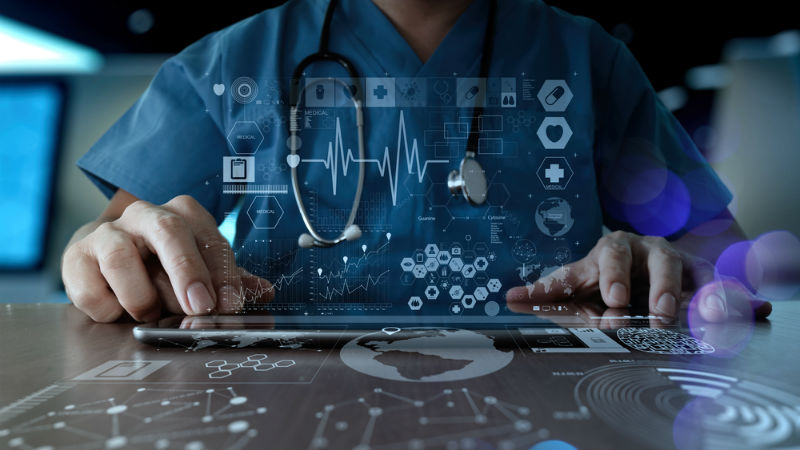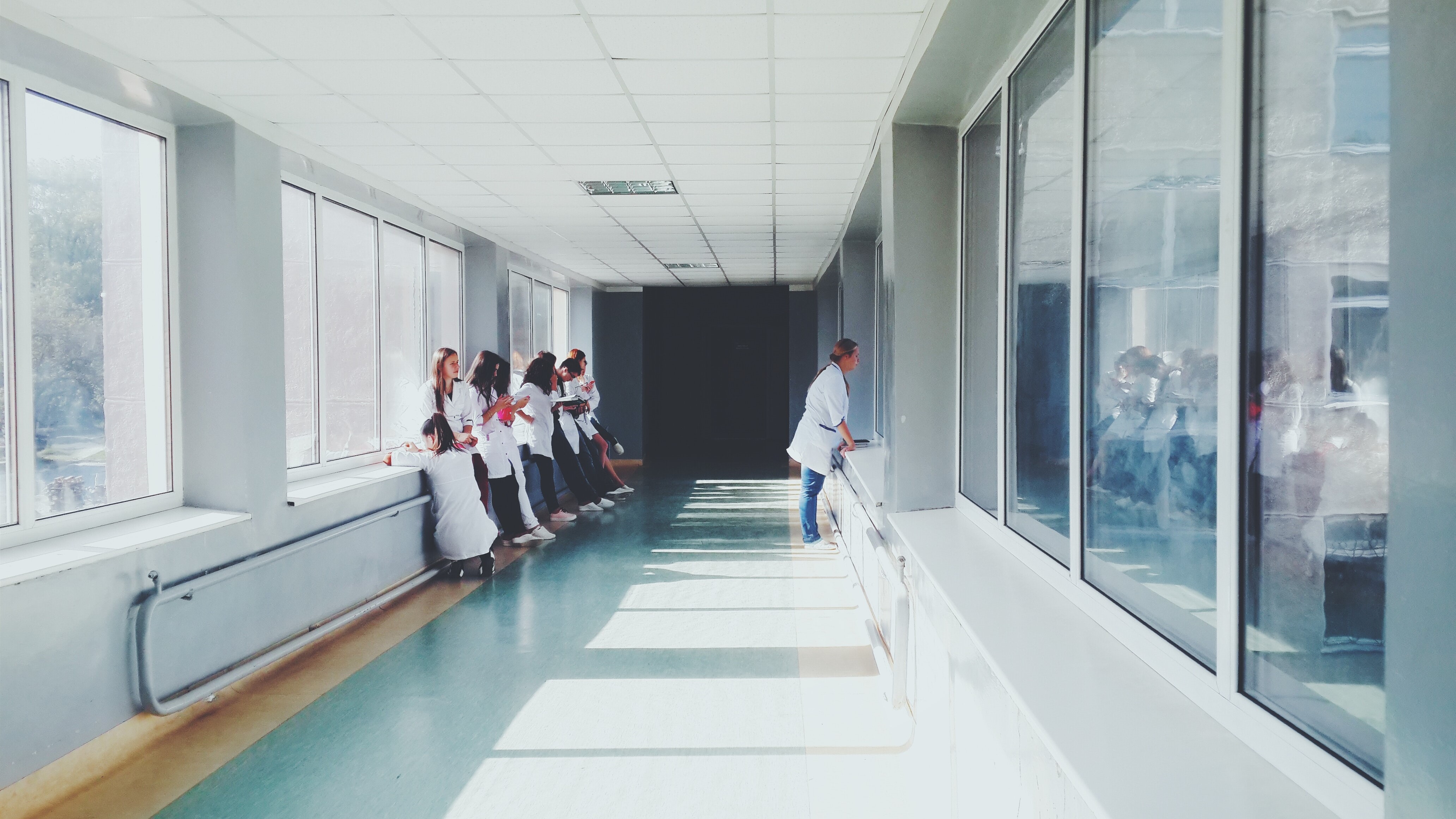How AI-driven remote healthcare monitoring improves health and peace-of-mind for vulnerable patients
Providing the middle ground between medical alert systems and in-person healthcare

Many people are familiar with the medical alert systems used by elderly or vulnerable people to contact urgent healthcare support by pressing a button. They were invented back in the 1970s and, until relatively recently, there were few other tech solutions available to help bridge the gap between living at home and being in the hospital.
However, in the last 10 years, we have seen an explosion of innovation in digital healthcare technology that has enabled people to take far more control of their health and their lives - and to live independently for longer through remote support from clinicians and caregivers.
Detecting emergencies before they happen
One of the most exciting areas is artificial Intelligence (AI) and Machine Learning-driven remote healthcare technology, which is already improving health outcomes and quality of life for patients and leading to improved efficiencies in capacity and reduced costs for healthcare providers.
This technology doesn’t replace emergency alert products and, in fact, it works well alongside them. Whereas emergency alert technology provides patients with a much-needed helping hand after an accident, the new generation of remote monitoring solutions are designed to detect deterioration in health before it becomes critical. And, as health academics agree, early treatment improves outcomes.
My own organisation, Vtuls, uses AI technology to track 40+ vital signs of patients, including blood pressure, blood oxygen, heart rate, temperature and many many more - these are taken daily and five of them are captured in just 30 seconds by holding our Biosensor device in the palm of your hand, with the rest captured by a mobile app or connected medical devices.
Using AI and Machine Learning technology, the platform analyses the captured data and then presents it to the nurse or caregiver in the form of a dashboard, with a red signal highlighting any vital signs that are above the selected threshold, which can then be acted on through a virtual or telephone appointment with the patient. To be clear, this technology is not designed to provide support in an emergency. Rather, it enables healthcare providers to act on deterioration more quickly and administer earlier treatments, preventing some of those emergencies happening in the first place.
Improved outcomes
Clinical trials undertaken with universities have shown that remote monitoring improves patient outcomes by around 20%, as it empowers clinicians to deliver earlier treatment of worsening conditions. For example, heart surgery might be avoided completely by administering preventative treatment early or its necessity might be discovered earlier, which will improve its outcome.
Are you a pro? Subscribe to our newsletter
Sign up to the TechRadar Pro newsletter to get all the top news, opinion, features and guidance your business needs to succeed!
The flexibility of this technology has enabled it to be used to monitor patients for conditions including heart failure, diabetes, COPD and even Covid-19, but the techniques could really be applied to any condition that has an impact on the body’s function, while the Machine Learning capabilities mean that its ability to respond effectively to deteriorating conditions is increasing all the time as our growing datasets fuel its understanding.

Reducing time spent in hospitals
Another big benefit of remote healthcare technology is that it reduces time spent in hospital. In the current situation that’s important for both individuals and healthcare providers. It has been reported that, around the world, people are dying at home because worries about being infected with Covid-19 are causing the seriously ill to avoid hospitals, while reports show that, in some countries, the impact of Covid-19 on hospitals has been worse than expected. Reducing time spent in hospital is great for quality of life in normal times and, applied to our current situation, it reduces exposure to Covid-19 for patients and healthcare providers and protects clinicians’ capacity.
In the UK, around 40% of Covid-19 deaths have occurred in care homes and there have been reports that some families now see sending relatives to a care home as ‘a death sentence,’ which is incredibly sad. That’s why my organisation is now providing its technology for free to care home providers, so they can uncover cases of Covid-19 more quickly and also speedily identify cases that occur after testing has been carried out, allowing for earlier treatment and faster isolation to prevent outbreaks.
It is likely that, in the future, we may see an increase in seniors wishing to stay in their homes for longer as a direct result of the outbreaks that have already taken place in care homes. Studies have shown that major barriers to independent living for elderly people include worsening subjective health, having diagnosed disease or health problems and feeling sometimes lonely and dejected. Remote healthcare monitoring can address issues like these because tracking vital signs enables earlier action to be taken when conditions deteriorate and also increases peace of mind as we know we're in good hands when being tracked by a clinician or caregiver.
In addition, mobile app questionnaires that can be built into this technology track mental health and mood, enabling interventions such as videocalls from clinicians. Furthermore, if patients are happy to give permission, the data collected can also be accessed by relatives, which provides another avenue for support, as a family member may respond to data showing a low mood by making a phone call or paying them a visit, depending on what the social distancing regulations might be at that point. Prior to Covid-19, 85% of home care providers said they expected their business to grow and I expect that to remain the case now, so supportive healthcare solutions are vital.
Protecting the lives of vulnerable patients
It’s clear that AI-driven remote healthcare technology has an important role to play in protecting and improving the lives of vulnerable patients. These platforms provide a much-needed middle ground between medical alert technology that provides a last-minute helping hand in an emergency and in-person healthcare that requires individuals to be away from their home and their loved ones. It allows elderly and vulnerable patients to stay in their own homes for longer, safe in the knowledge that their health is being monitored and deterioration is acted on early to improve outcomes. That feels especially important right now, when seniors are keen to stay out of hospital to minimise their chances of infection, but it will remain so even after all of this is behind us as we begin to see even greater value in maintaining good health and in our quality of life.
Dr Jas Saini is the Chief Executive Officer at Vtuls
- We've also highlighted the best telemedicine software
Dr Jas Saini is the Chief Executive Officer at Vtuls, providers of market-leading AI and Machine Learning driven technology that enables clinicians and caregivers to remotely monitor the vital signs of vulnerable patients and to respond rapidly to deteriorating conditions. He has a PhD in electronics and works with a team of healthcare, AI and enterprise software to keep Vtuls as the cutting edge of remote healthcare technology. The tech is approved by CE, FDA, ISO and is fully HIPPA compliant, and has been deployed in seven countries.
